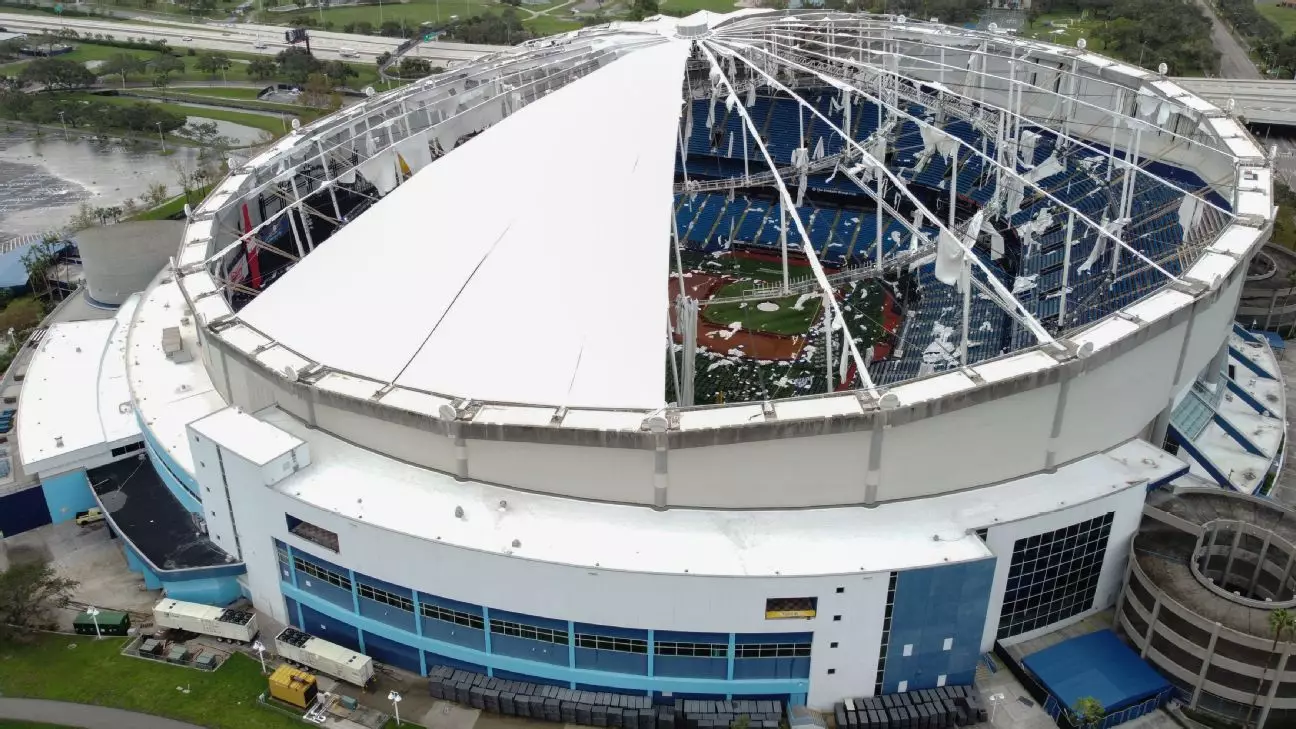The ramifications of Hurricane Milton have left an indelible mark on St. Petersburg, prompting urgent action from local lawmakers regarding Tropicana Field, the home of the Tampa Bay Rays. After extensive discussions and deliberations, the St. Petersburg City Council has voted decisively, allocating $22.5 million for vital roof repairs that are expected to reinstate the stadium’s functionality for the 2026 MLB season. This pivotal decision reflects the city’s commitment to rejuvenating not just a sports venue, but also the community it serves.
Council member Lissett Hanewicz, who is also an attorney, laid out the legal foundation for this costly endeavor, asserting that the city is bound by contractual obligations to restore the stadium. “We are legally required to fix the stadium,” she affirmed. This sentiment captures the precarious balance between civic responsibility and financial prudence that city officials must navigate, especially in the wake of such unpredictably destructive forces like hurricanes.
The Rays’ Temporary Home: A Shift in Play
As the city marshals efforts to repair the storm-damaged facility, the Rays have found a temporary haven at Steinbrenner Field in Tampa, a spring training park with a significantly reduced capacity of around 11,000 seats. This transition has ushered in a new chapter for the team, which recorded a respectable 4-2 on their initial stand at the open-air ballpark. However, the relocation underscores the uncertainty of the Rays’ long-term residency at Tropicana Field. The question looms: will the team stay loyal to St. Petersburg as time marches on towards 2028, or is Tampa awaiting an even more promising overture?
Recent expansions in Major League Baseball have put regional retention firmly on the league’s agenda. The Rays, since their inception in 1998, have remained an integral part of the Tampa Bay region. But with escalating conversations surrounding stadium deals, it is critical for all stakeholders to address that urgency with solid commitments and strategic planning.
Financial Implications: A Balancing Act
The estimated overall repair cost of $56 million for Tropicana Field paves the way for extensive renovations beyond just the roof. The ambitious undertaking encompasses a wide range of improvements—from resurfacing the playing field to enhancing audio-visual electronics and ensuring concession stands are operational. This level of financial investment births complex challenges but also exciting opportunities. City Architect Raul Quintana affirmed the necessity of these upgrades, noting, “This is a complex project. We feel like we’re in a good place.”
Interestingly, the roof component of this grand design will involve innovative materials crafted in Germany and assembled in China. The project’s cost could be indirectly impacted by tariffs instituted during the current administration, demonstrating the multifaceted pressures governing urban development today. The forthcoming membrane roof promises an impressive durability, capable of resisting hurricane winds exceeding 165 mph—a significant enhancement in safeguarding against future weather events.
Rays’ Leadership on Board: A Collaborative Effort
In light of the ongoing cooperation between the Rays organization and city authorities, the optimism surrounding these repairs is palpable. Rays co-president Brian Auld praised the collaborative engagement among city, Rays, and MLB staff, indicating a shared dedication to revitalizing the Tampa Bay region’s baseball culture. Such cooperative effort serves as a beacon of hope in a landscape often plagued by discordant interests and differing timelines.
Nevertheless, as repairs advance, there remains a pressing desire among some city officials for a more community-oriented allocation of these funds. Council member Brandi Gabbard articulated this sentiment poignantly, saying, “I’d much rather be spending that money on hurricane recovery and helping residents in the most affected neighborhoods.” This encapsulates the tension between maintaining an iconic sports venue versus addressing the immediate needs of the community, creating an intriguing narrative as the city continues to debate its priorities.
As St. Petersburg charts its course toward a revitalized Tropicana Field, a nuanced exploration of community need, economic viability, and regional loyalty is essential. The decisions made during this critical juncture will undoubtedly shape the local landscape for generations to come.

